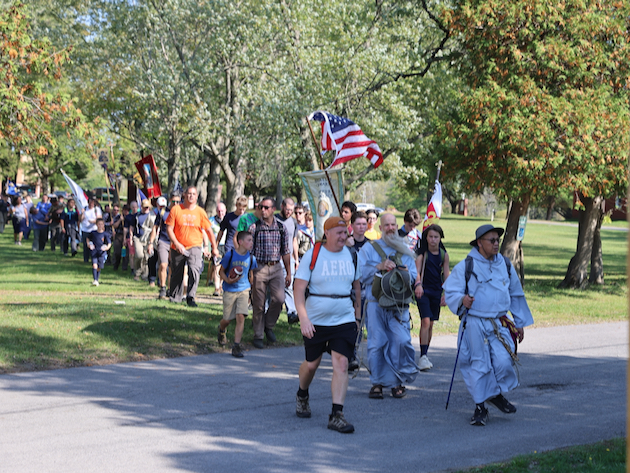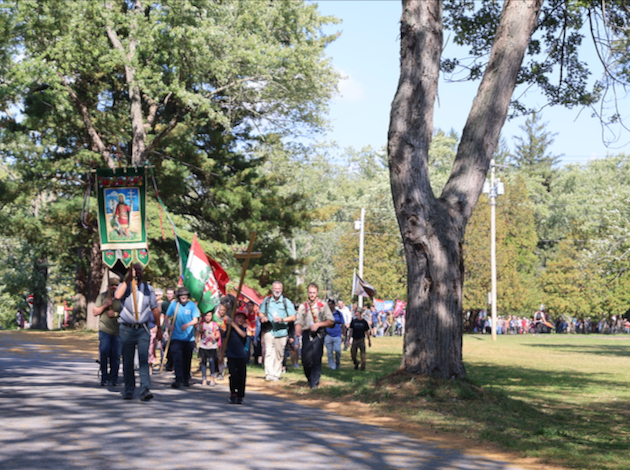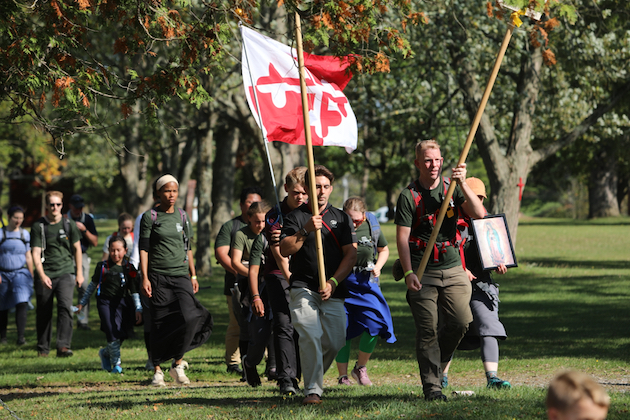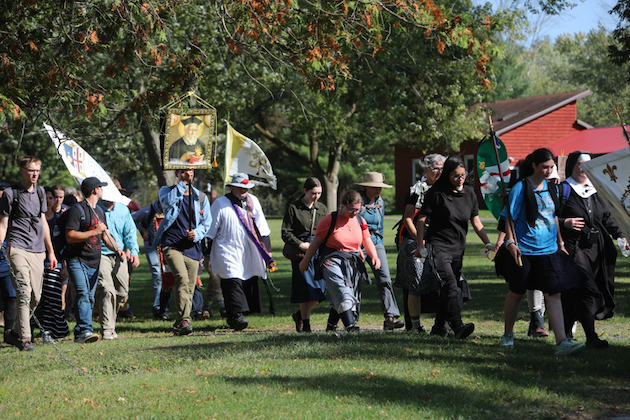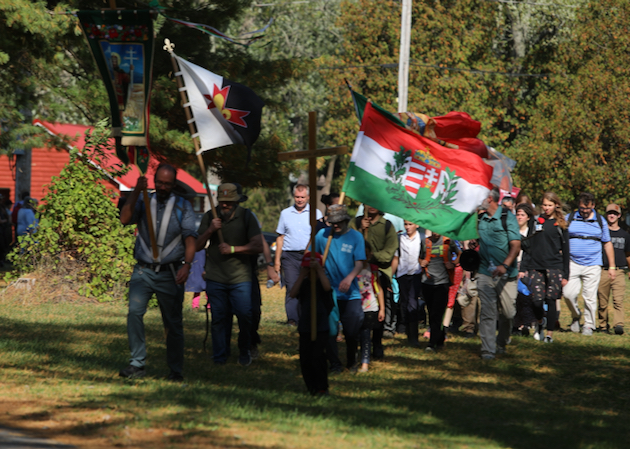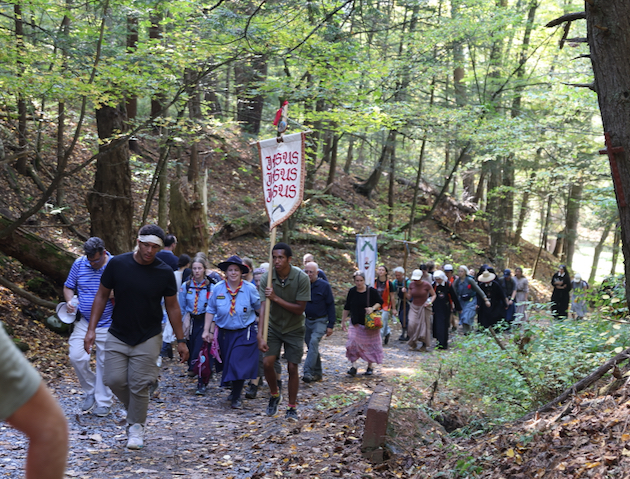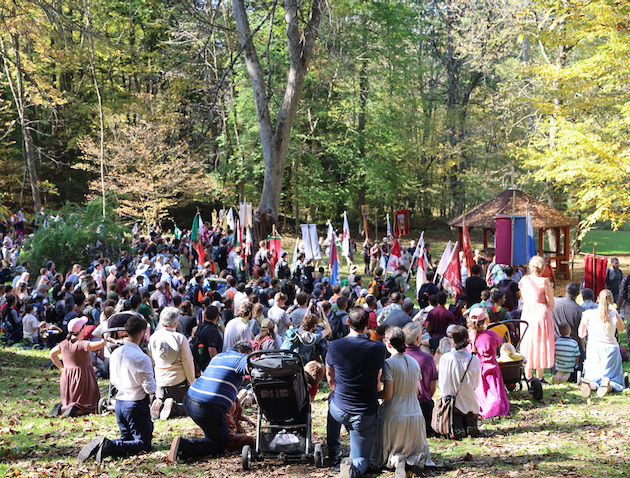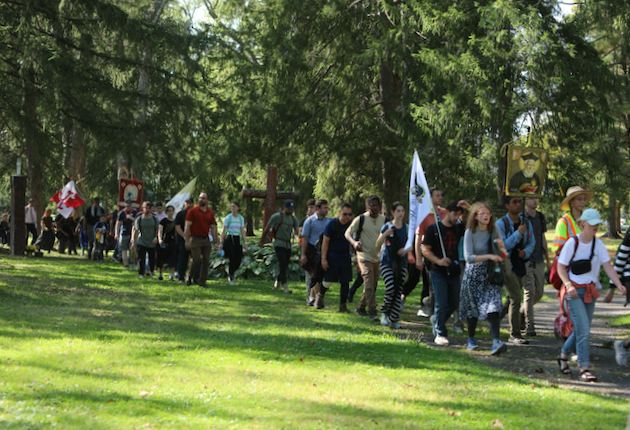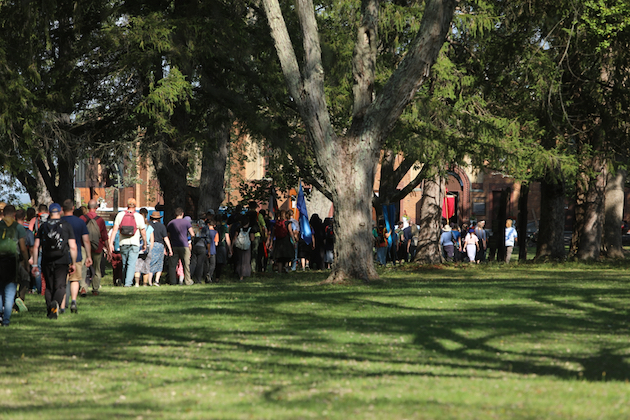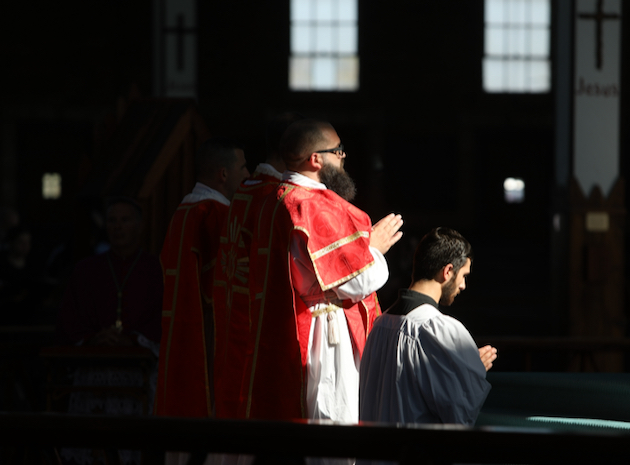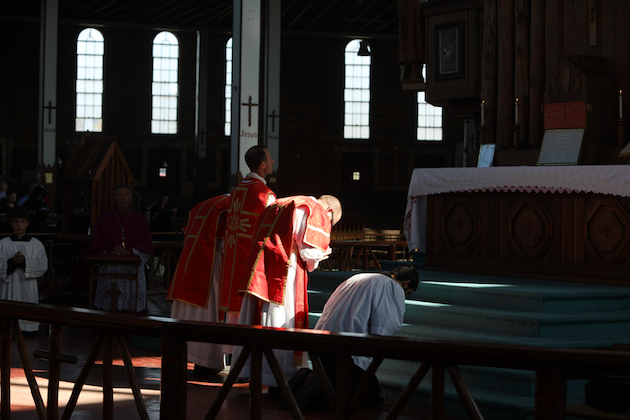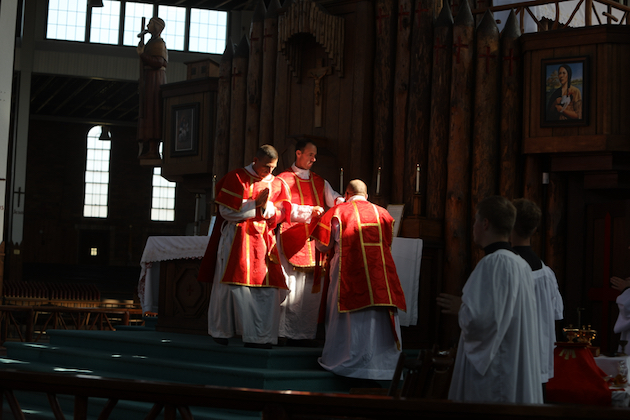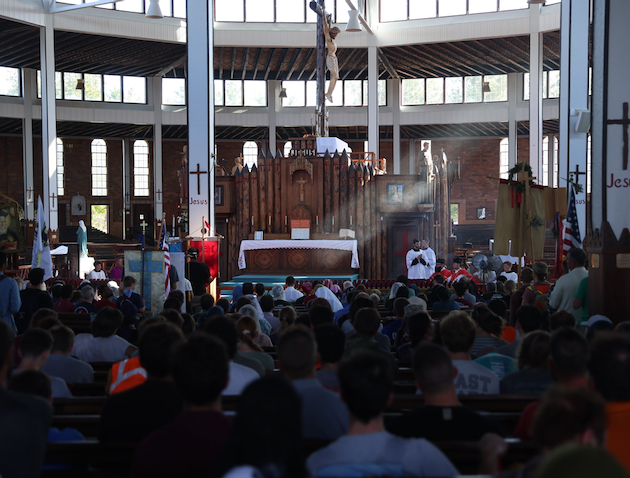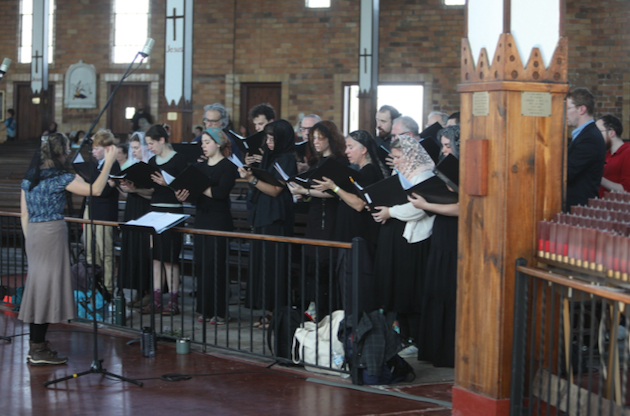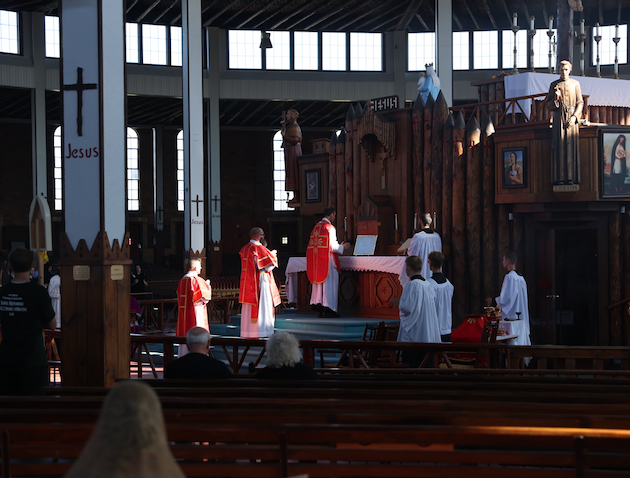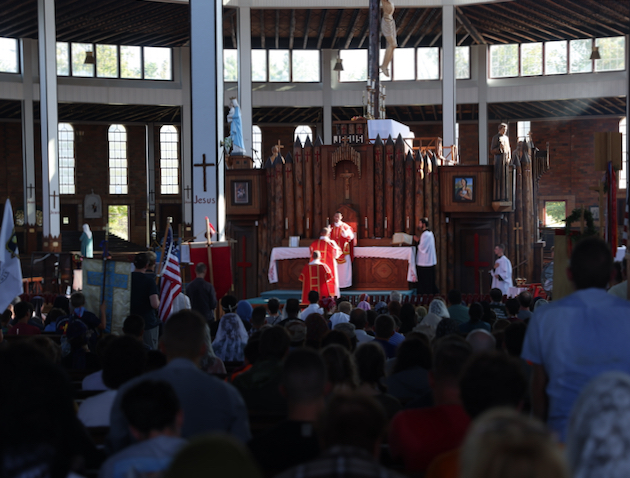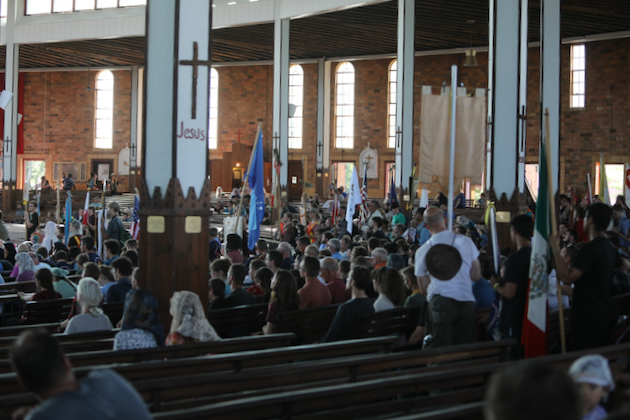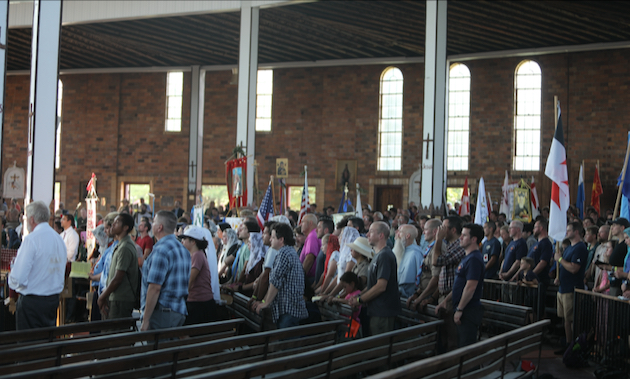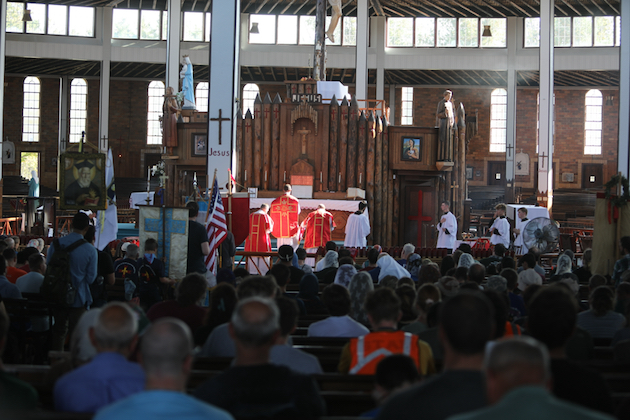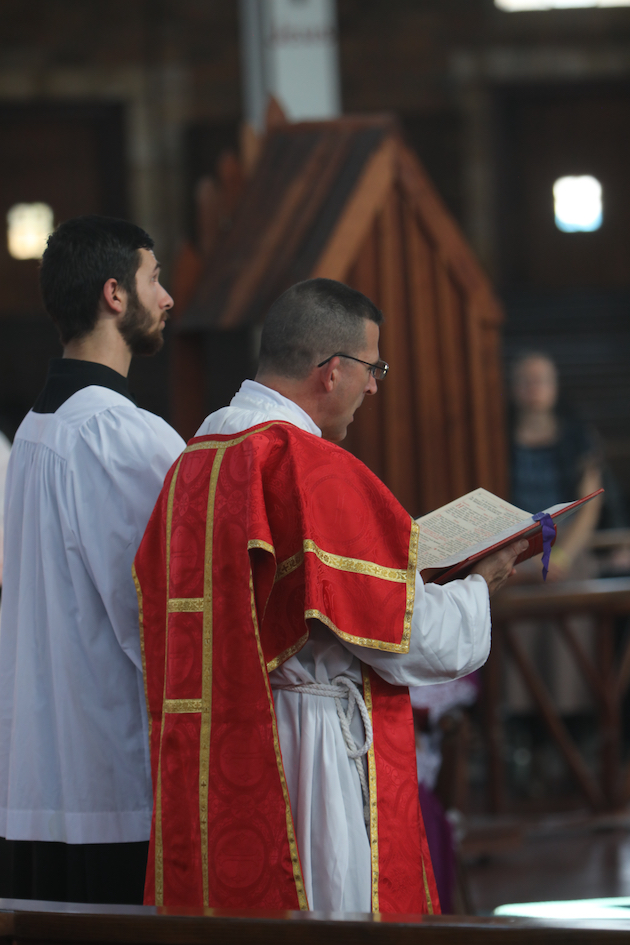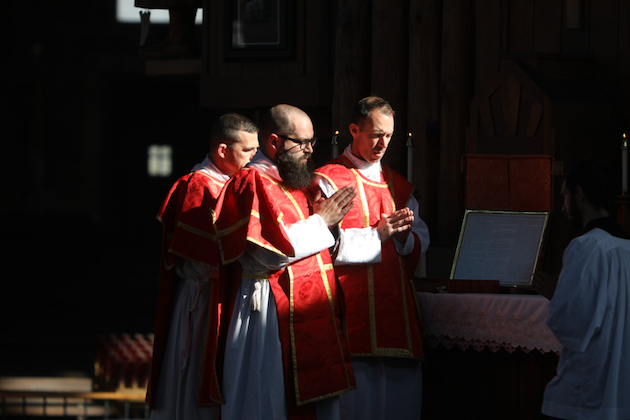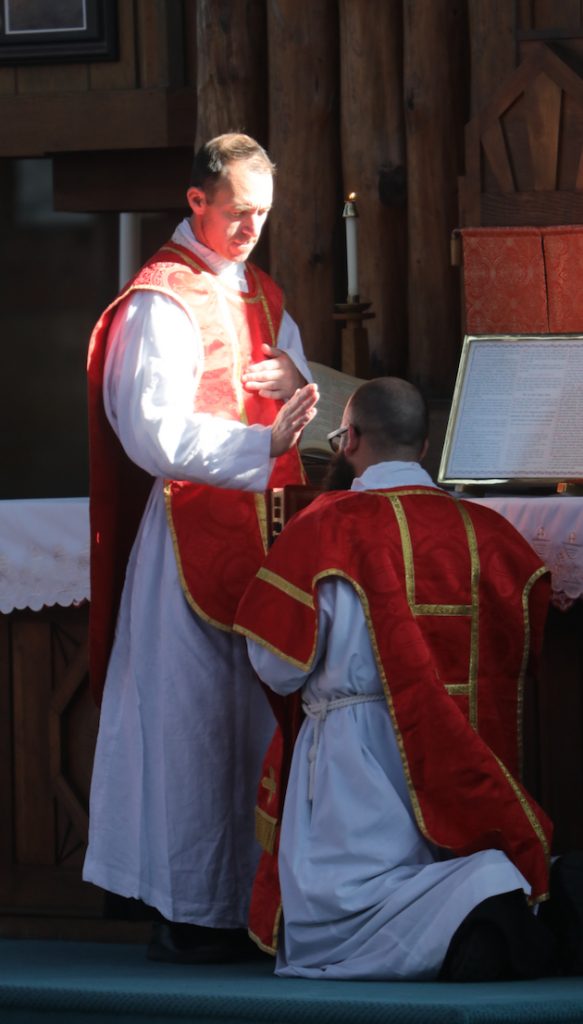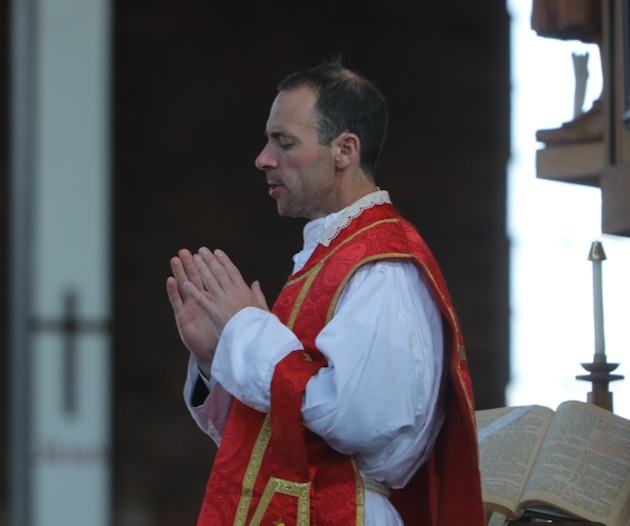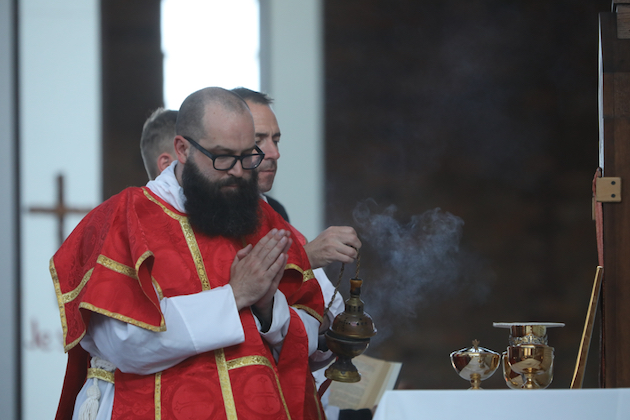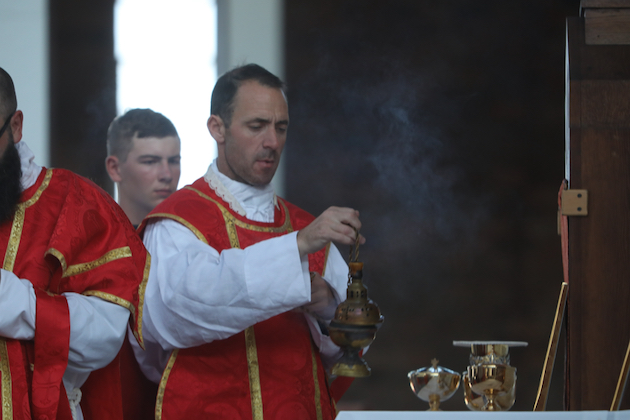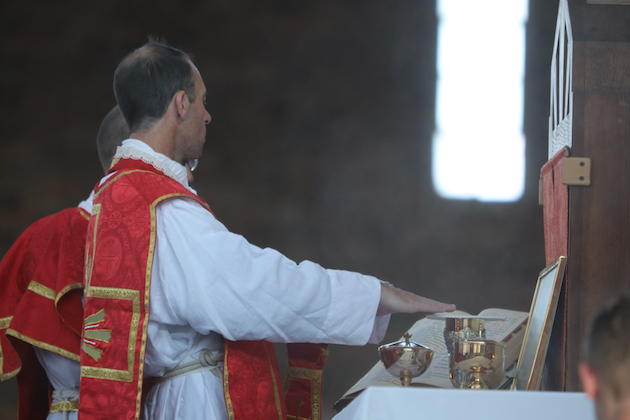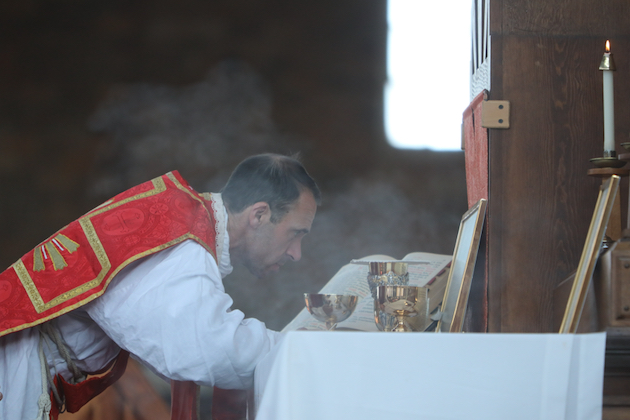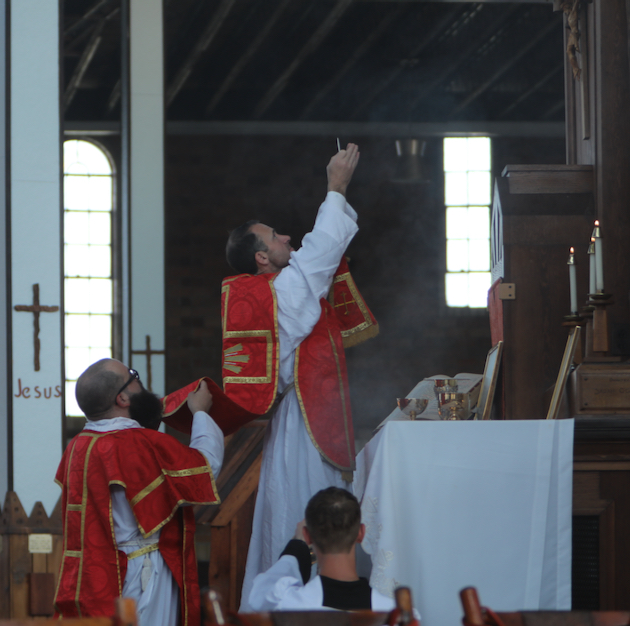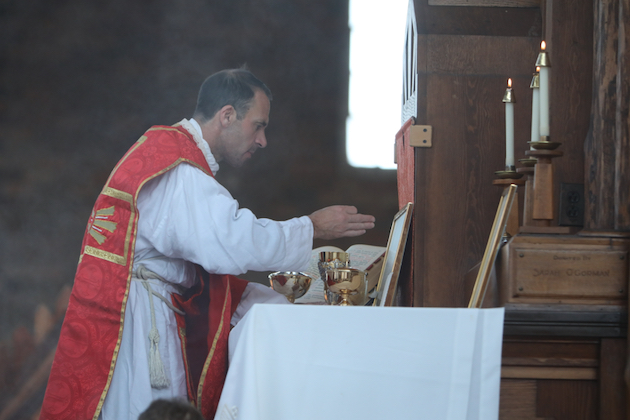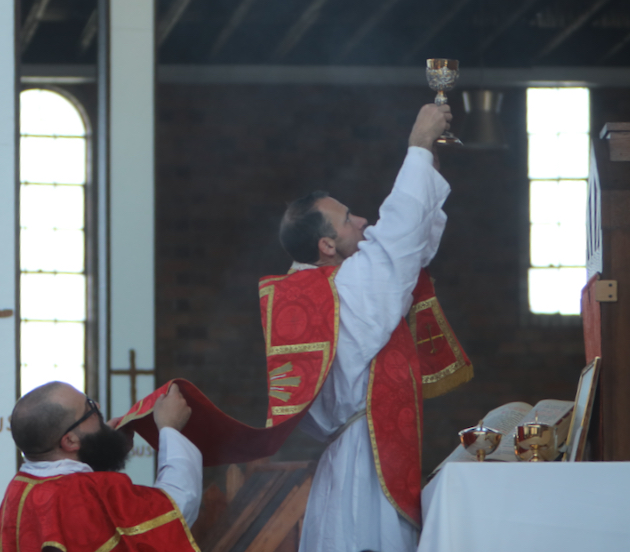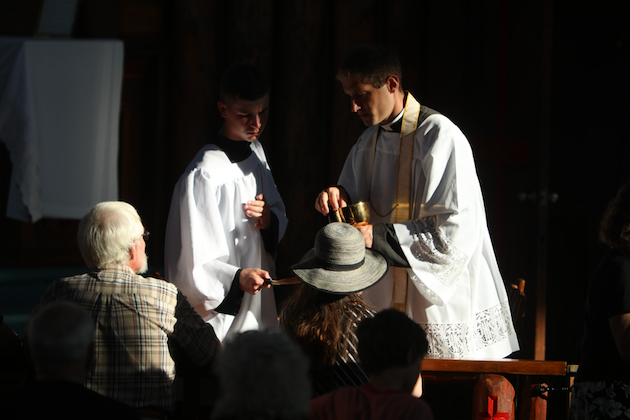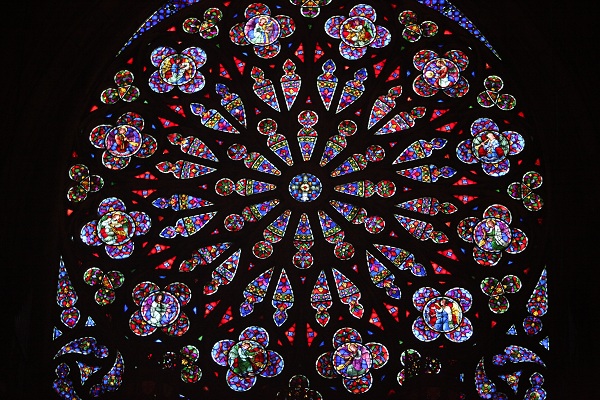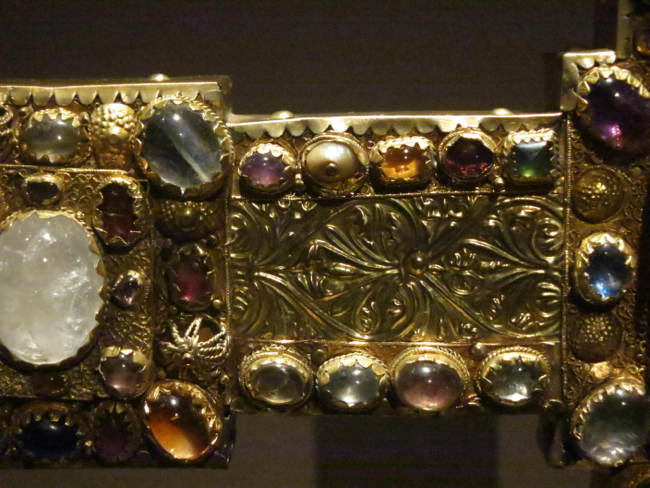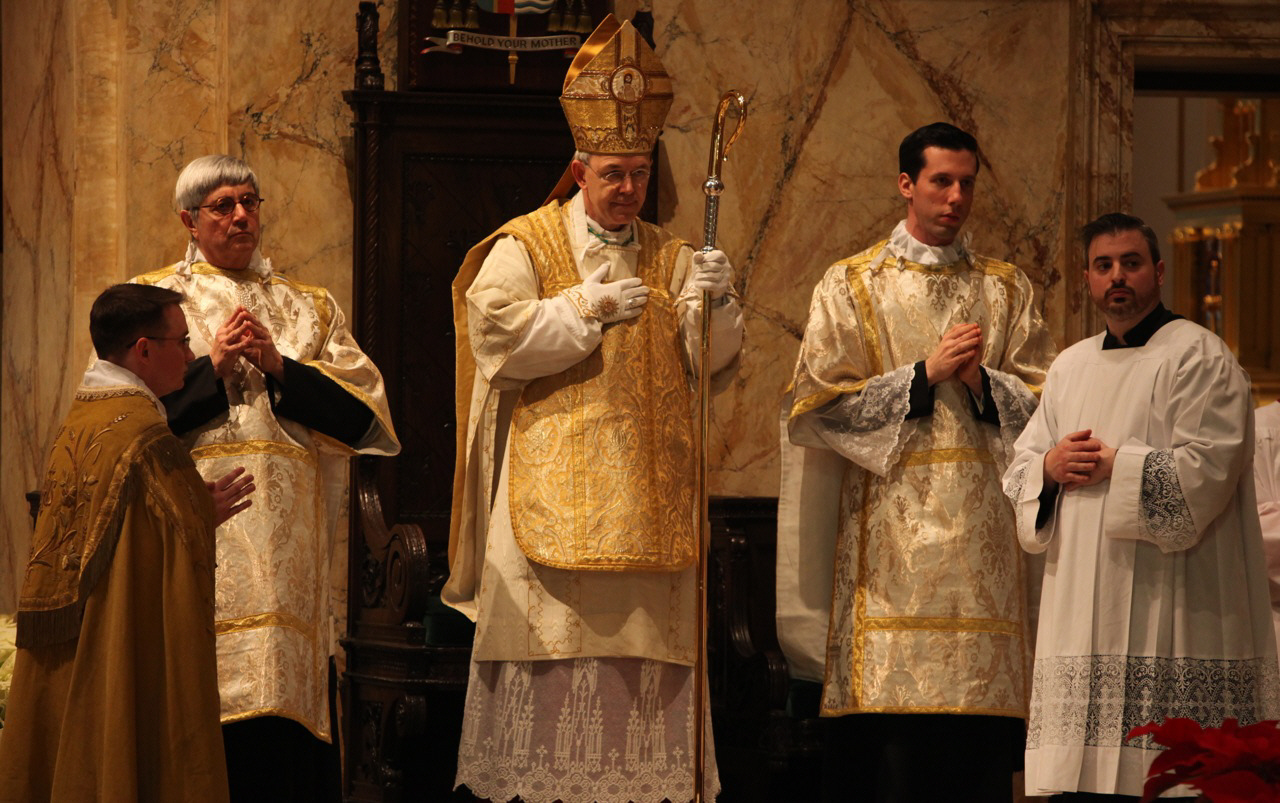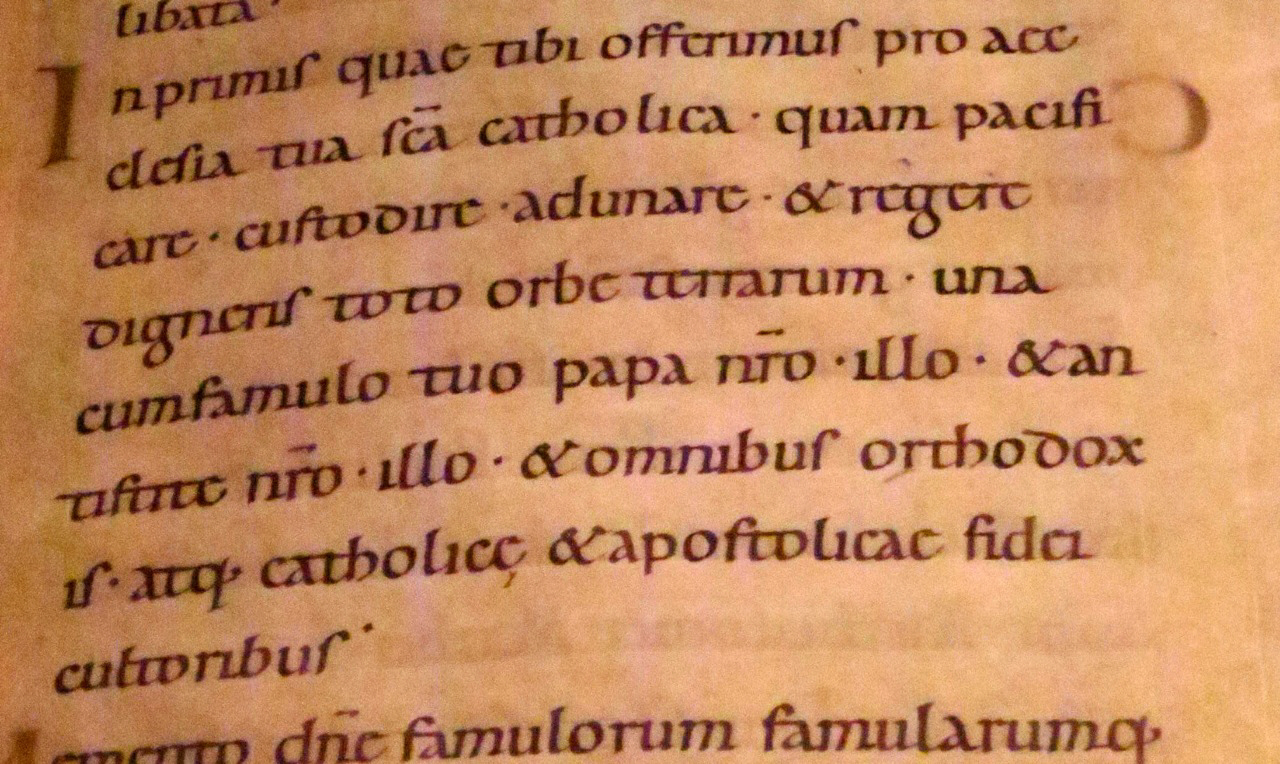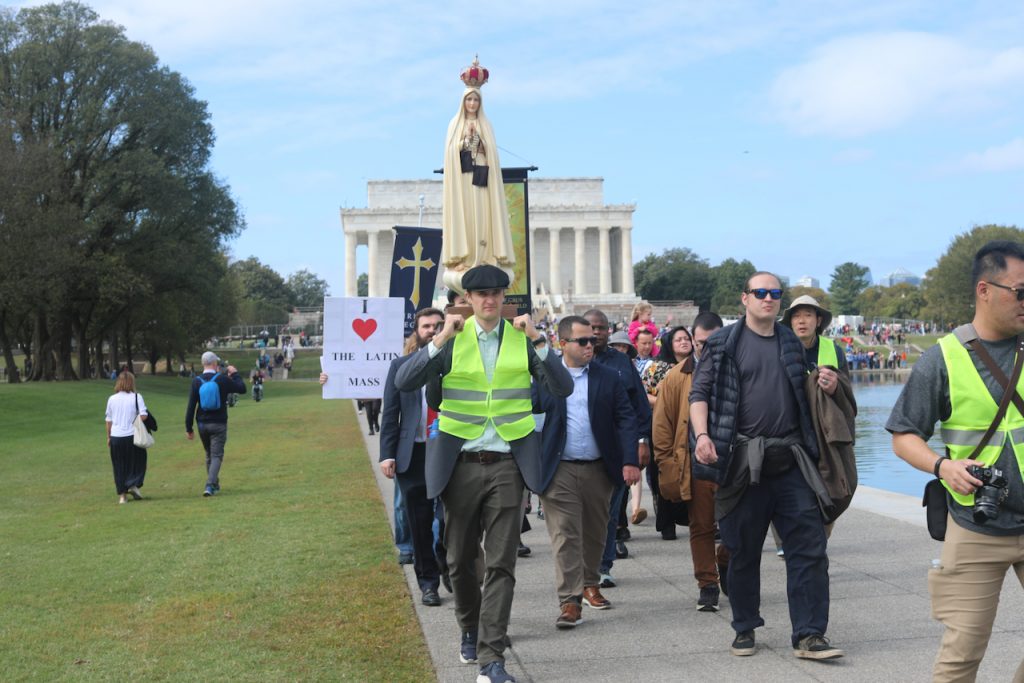
On Saturday, October 11, the National Latin Mass Pilgrimage took place once more. Its path lies between the Cathedrals of Arlington, Virginia and Washington DC (two dioceses which introduced some of the most confrontational measures against the Traditional Latin Mass). The Arlington Latin Mass Society sponsored the pilgrimage. Some 50 pilgrims took part. Now certainly dire forecasts of a looming weather disaster – which proved false – diminished participation. But I can’t ascribe the low turnout entirely to that. We also had noticed a declining numbers at our last visit to the pilgrimage. As in prior pilgrimages, the clergy were conspicuous by their abscence.
Numbers, however, are not everything. Among the pilgrims, spirits were high. This pilgrimage was, as in the past, well organized. And are there not prominent examples of pilgrimages that a smaller core group has preserved through the years that later flowered (in numbers) once again: the “Pilgrimage of the Restoration” in Auriesville, NY or even the “Pilgrimage of Christendom” in Chartres.
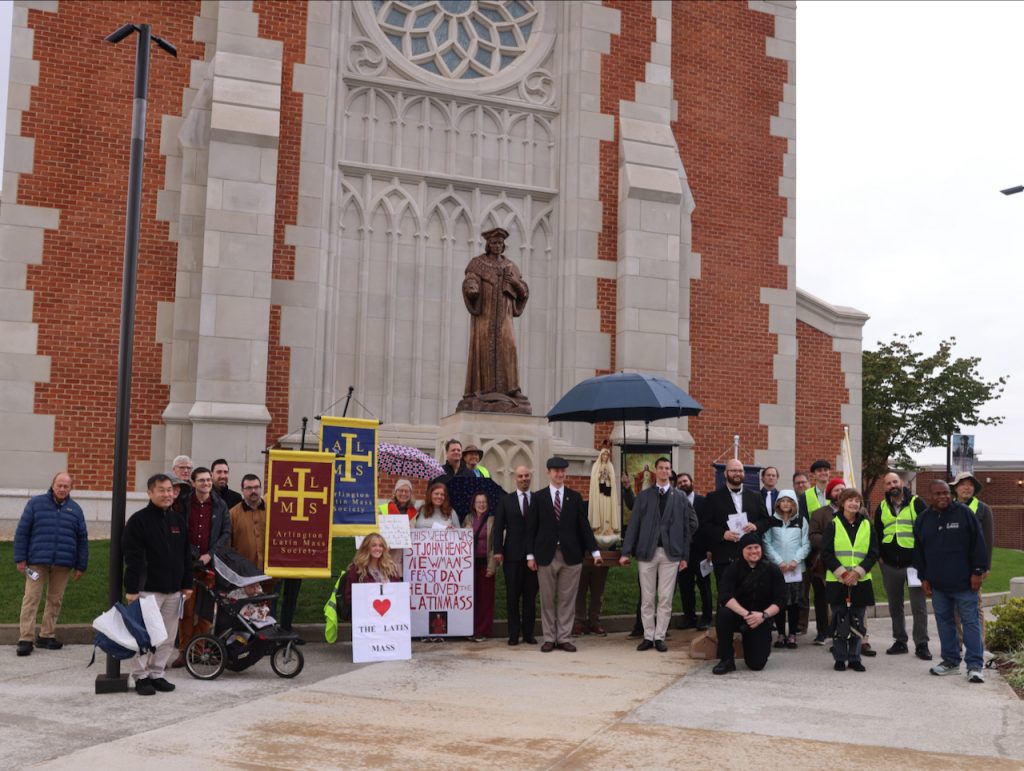
At the beginning it seemed that threatened rain-and windstorms might materialize. Later, the skies cleared and it turned out to be a beautiful day. (Above) In front of the cathedral of the Arlington diocese – with a statue of St. Thomas More looking down.
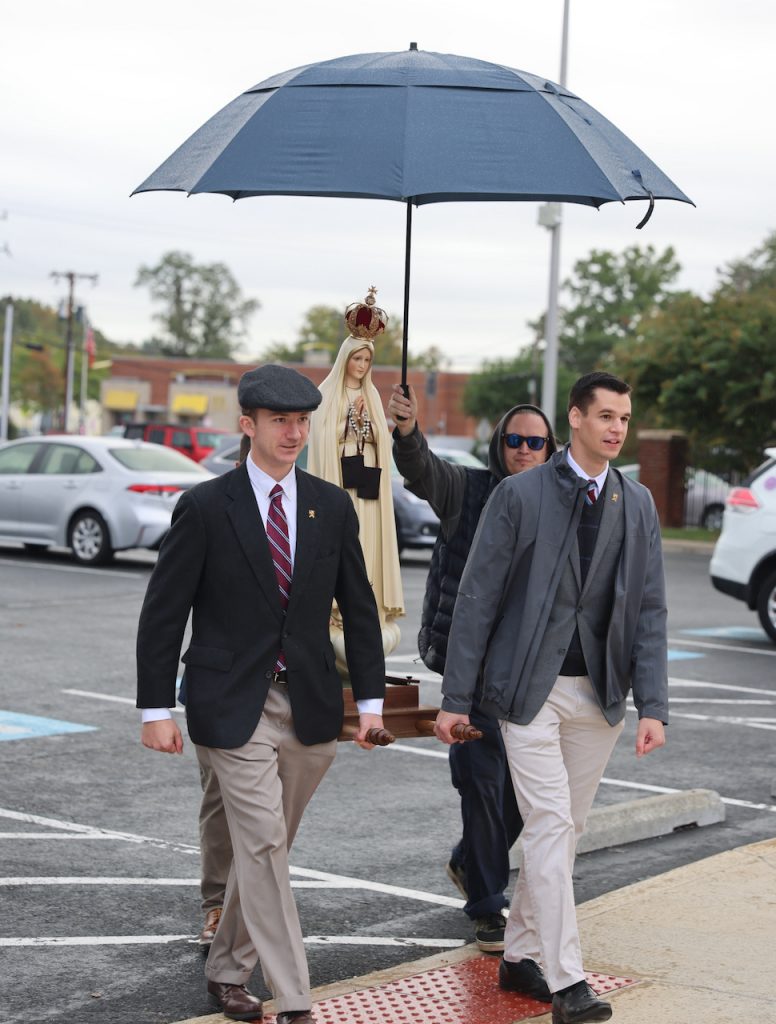
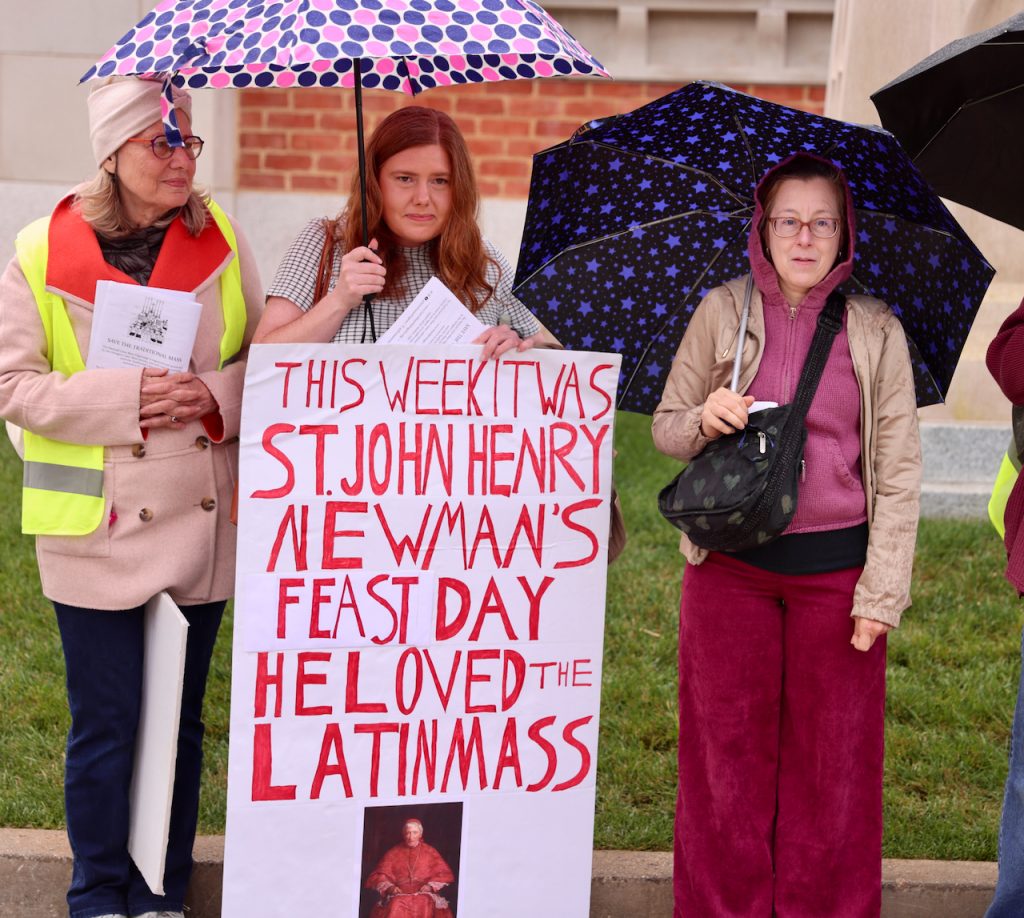
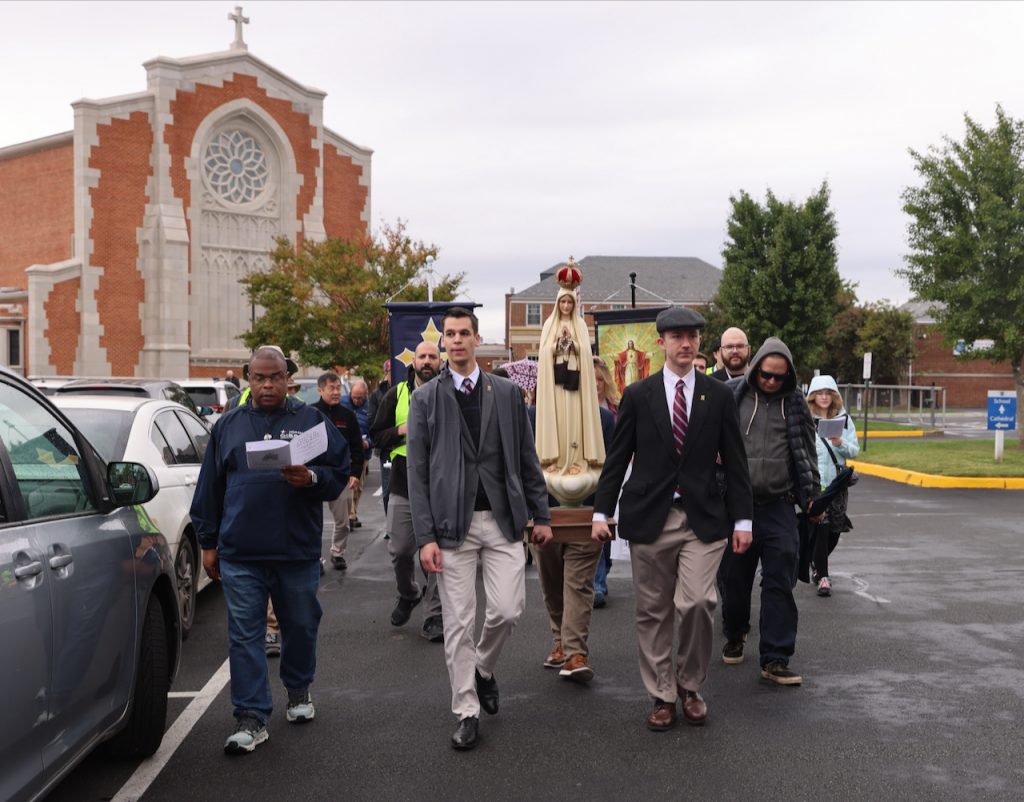
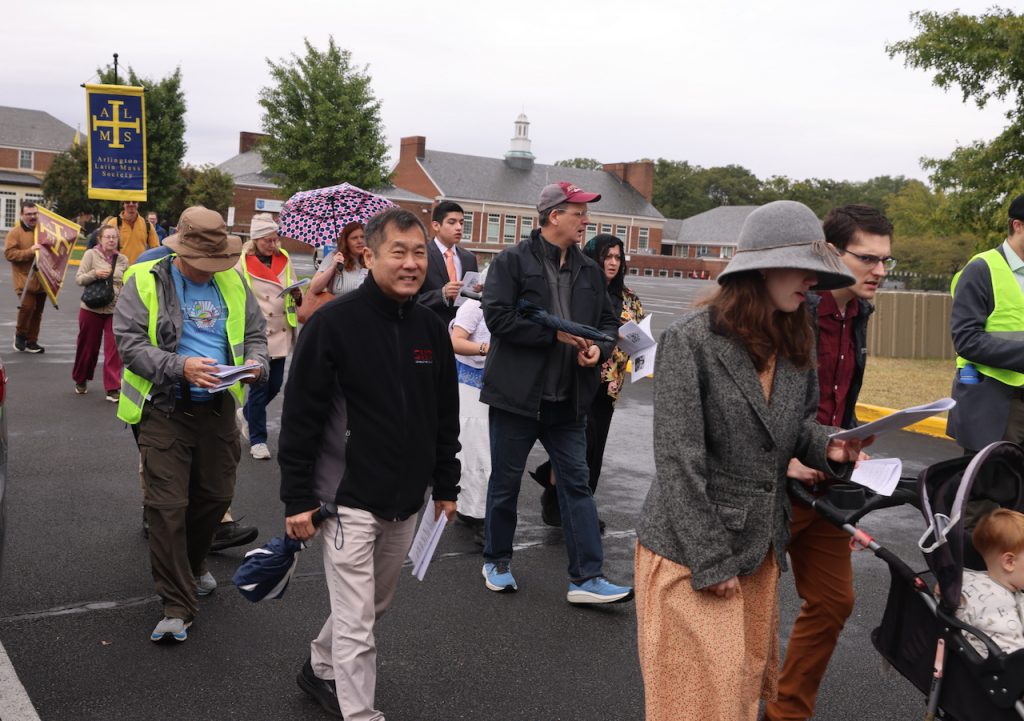
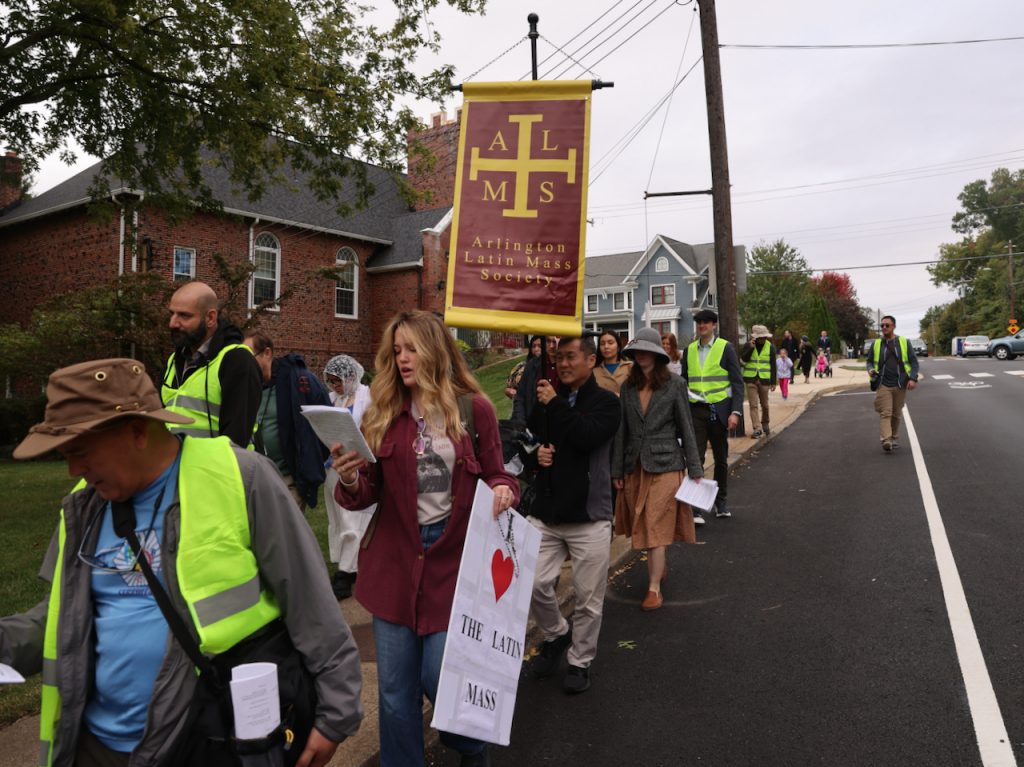
(Above) Chanting and praying the rosary. Sometimes cars honked approval.
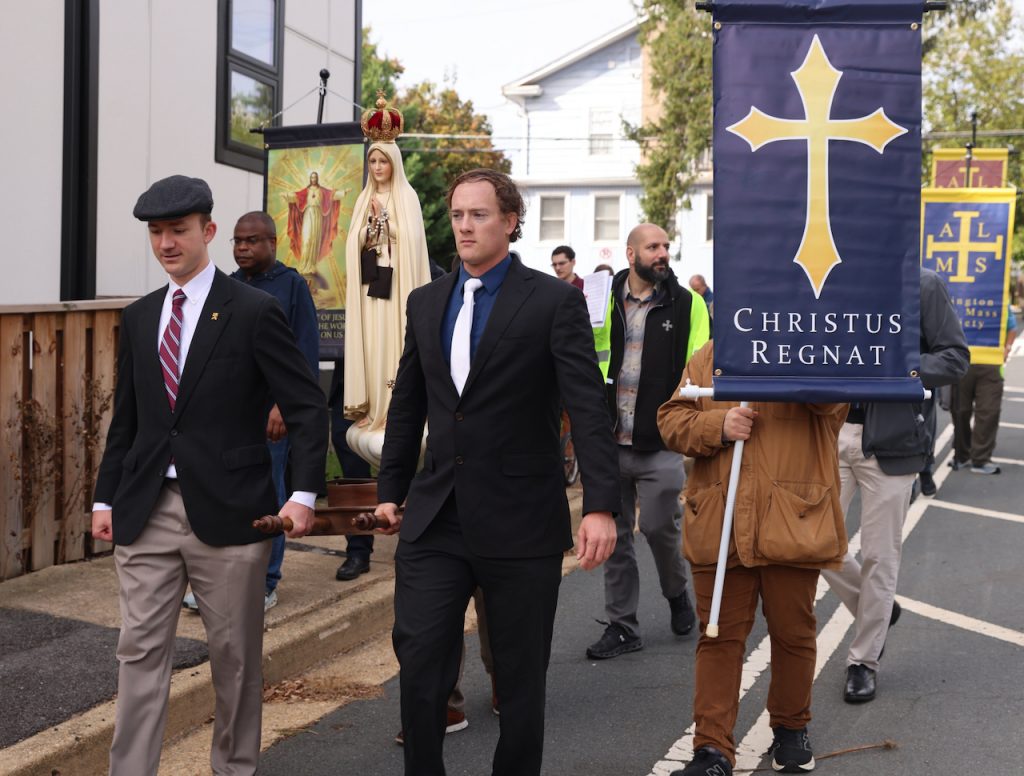
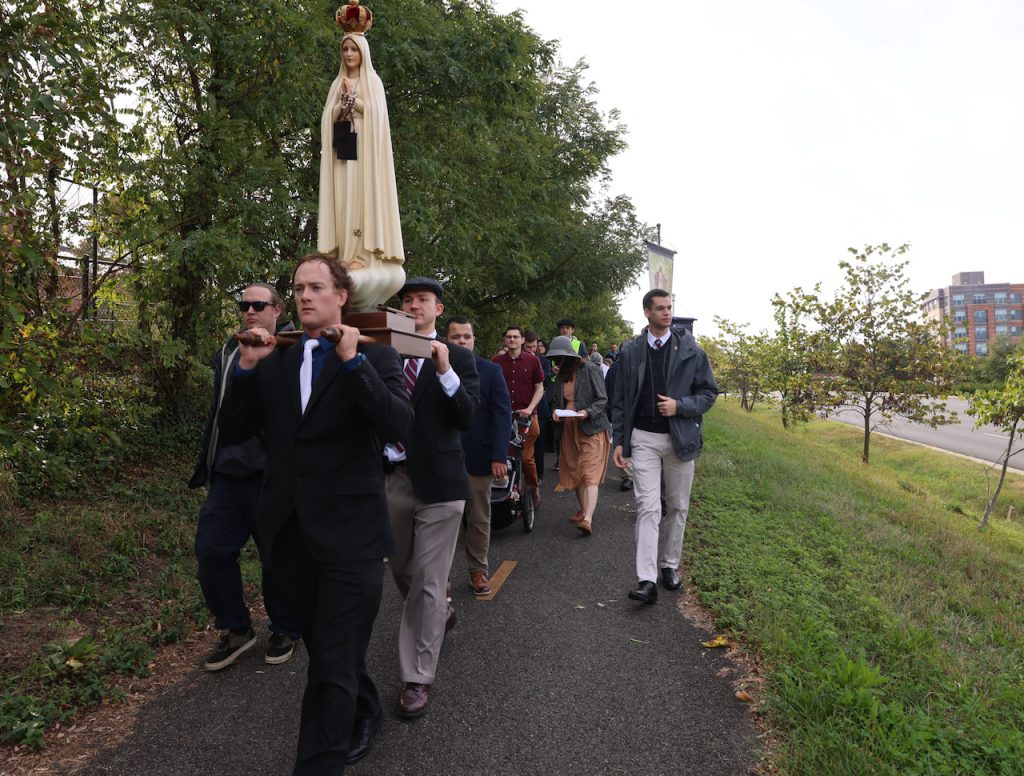
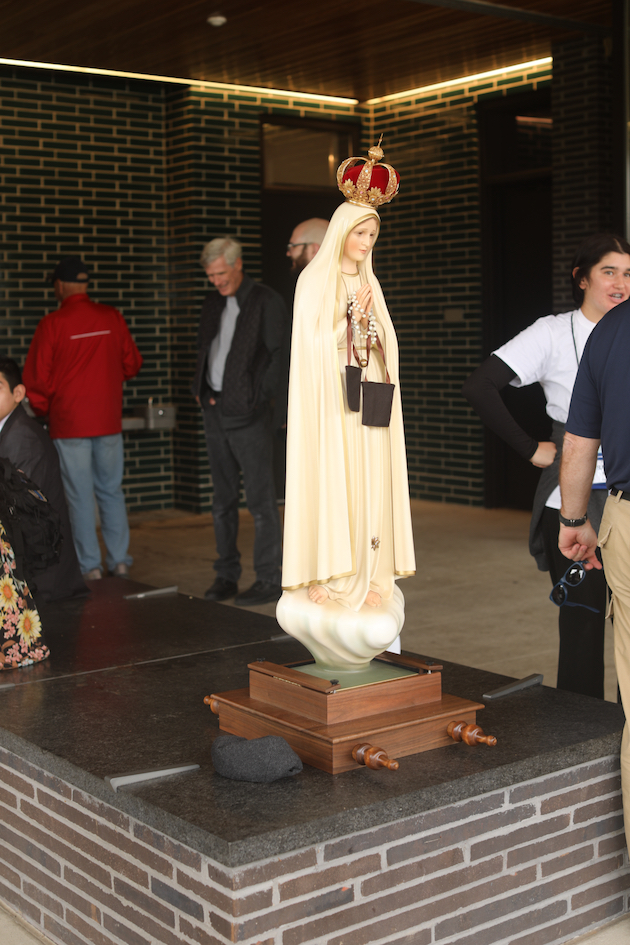
(Above) The Pilgrim Virgin – at the one rest stop for the pilgrims across from the Iwo Jima memorial.
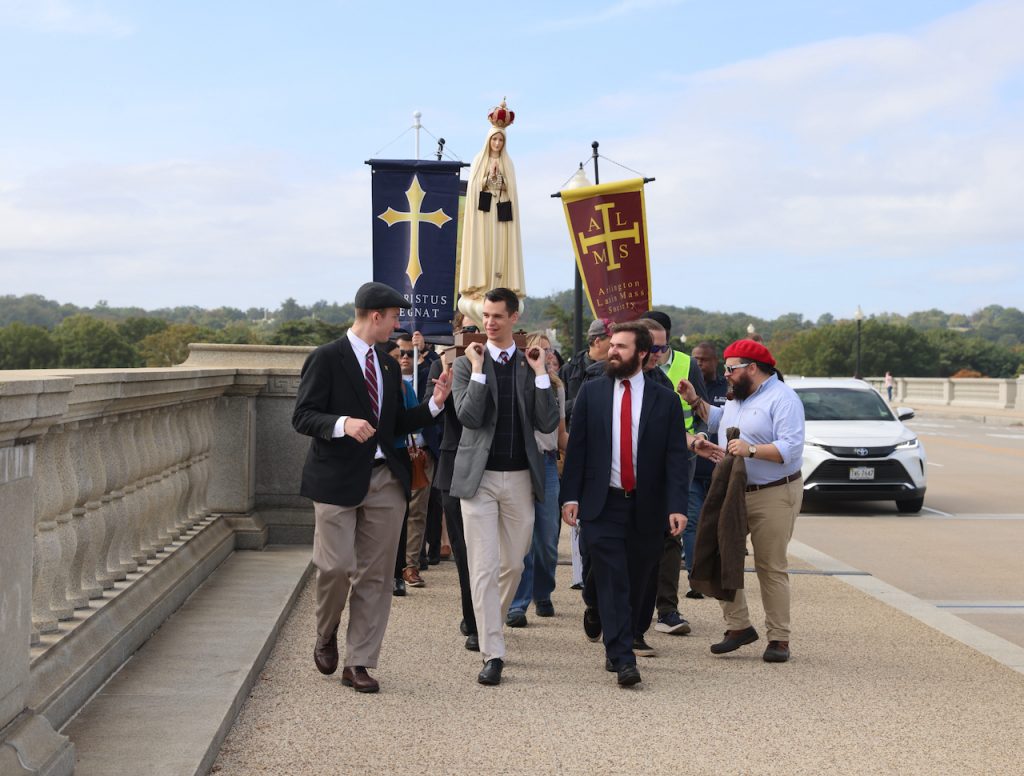
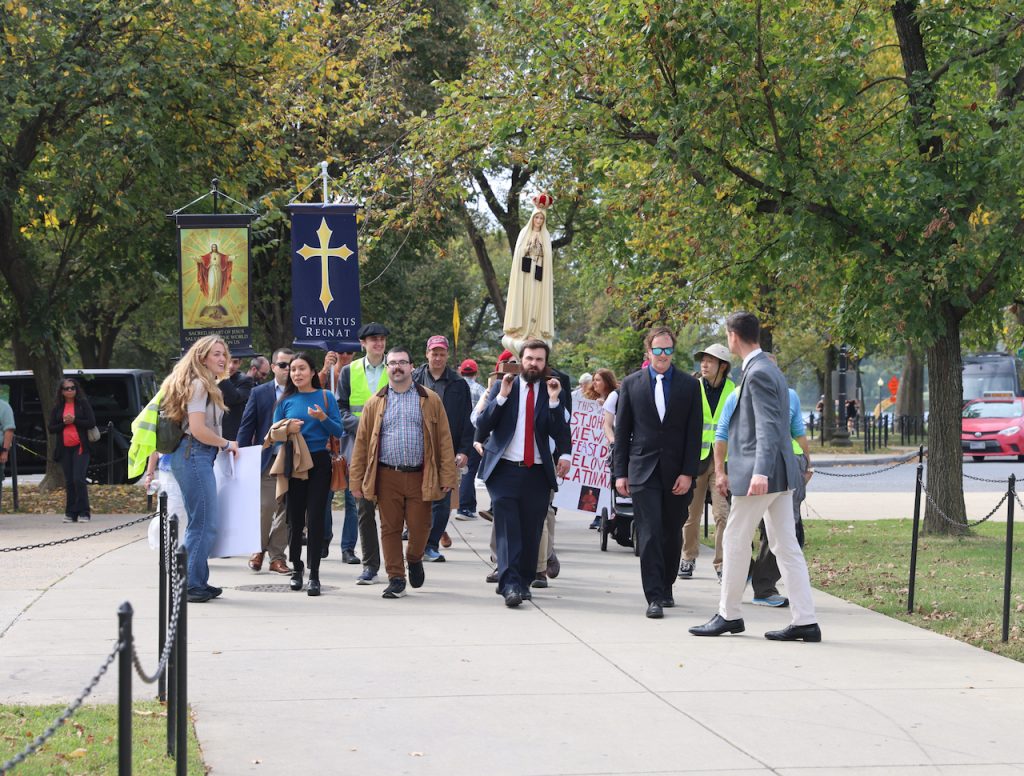
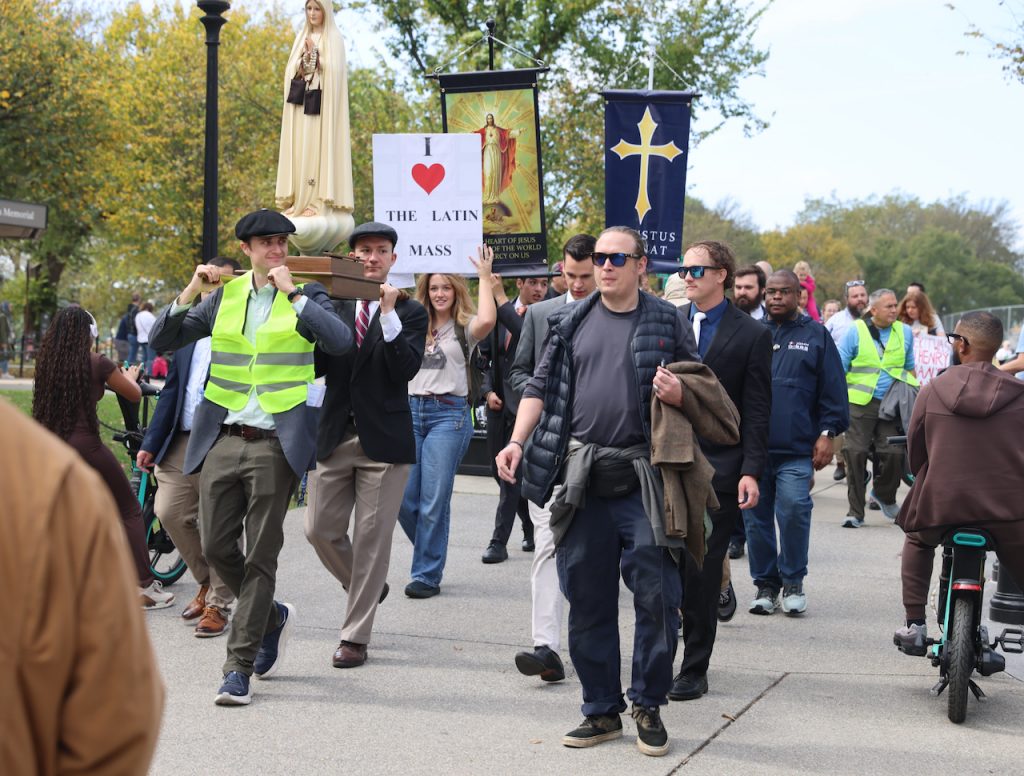
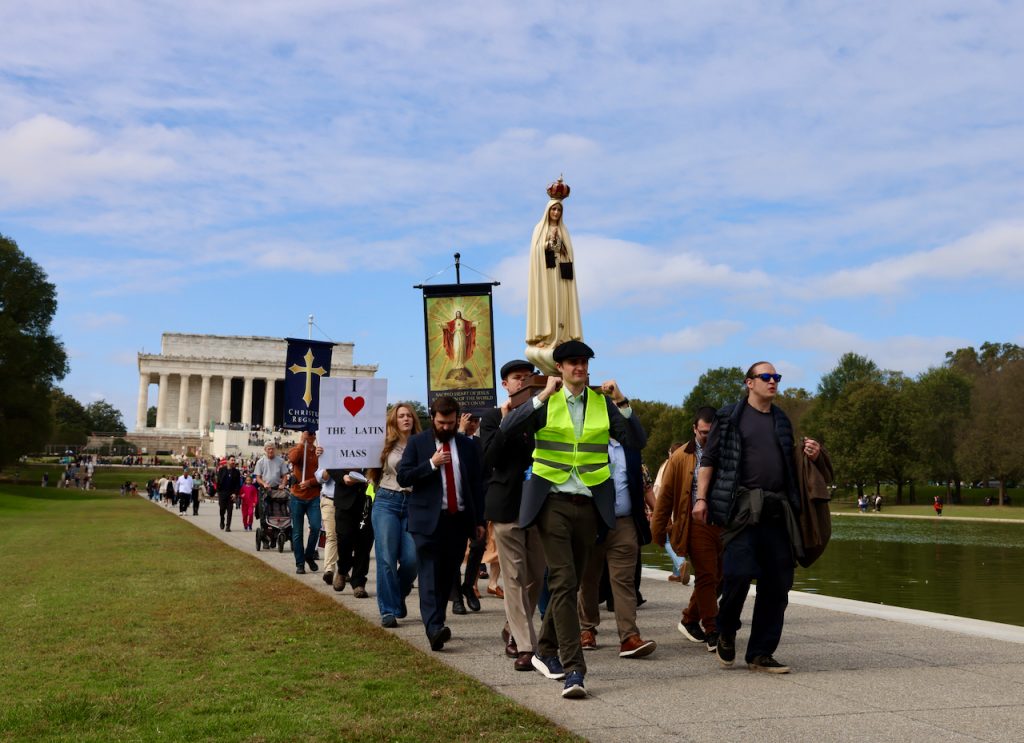
(Above) Processing onward from the Lincoln Memorial. The area around that monument was dominated by a deafening “Jesus Movement” event.
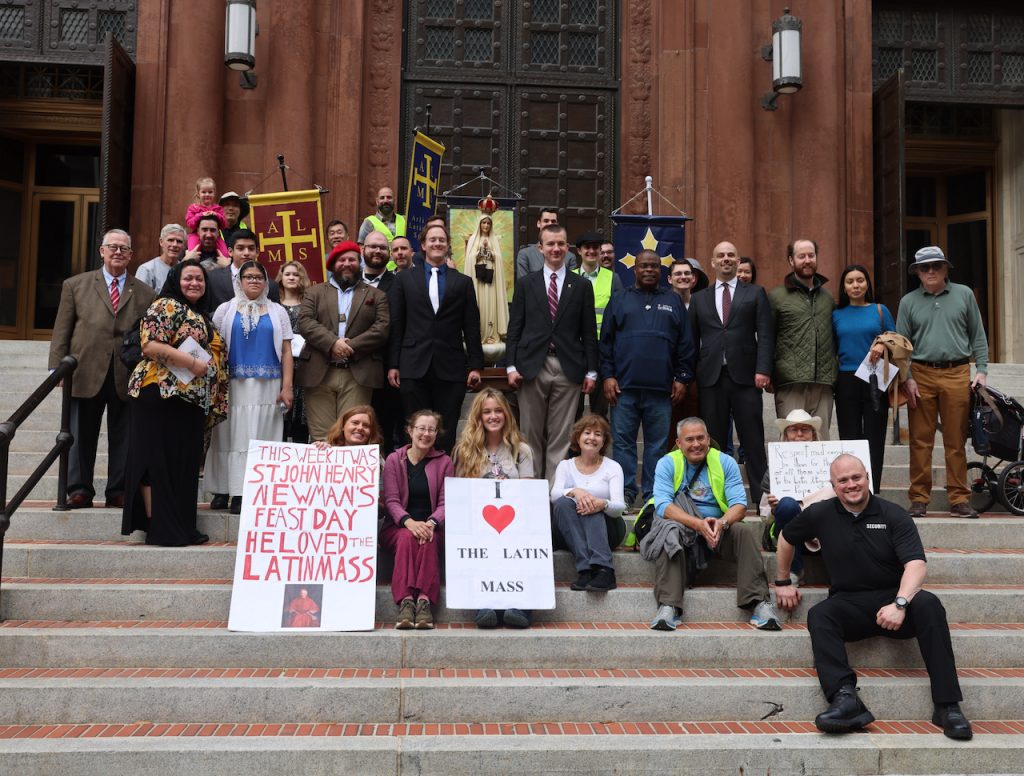
(Above) On the steps of St. Matthew Cathedral. The pilgrimage concluded with the chanting of None and Vespers on the steps of the Cathedral (not within it!).
